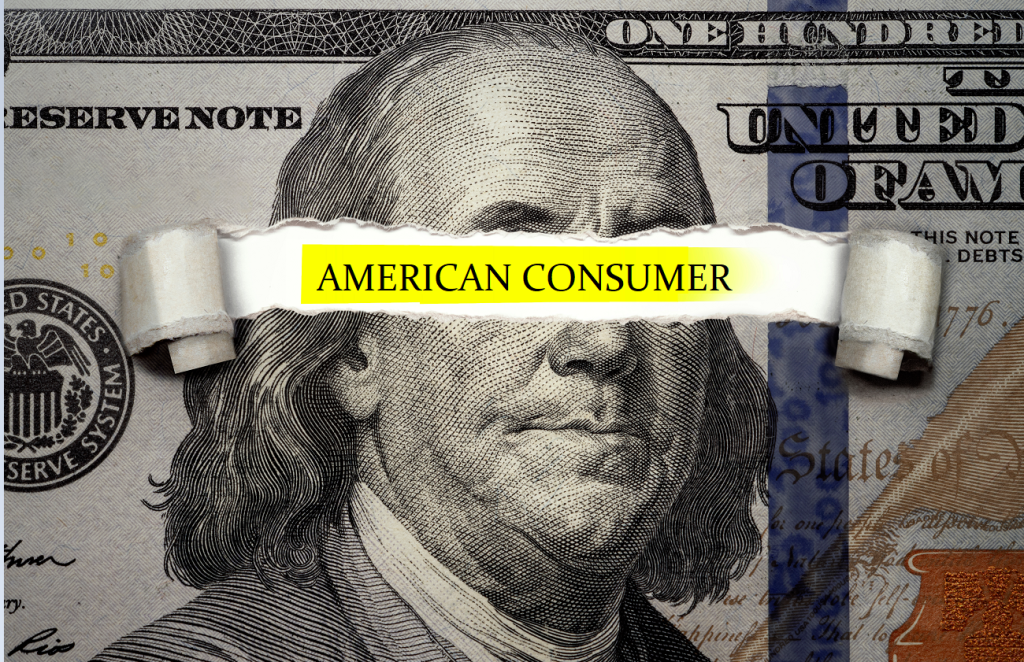Question: Martin, I wanted to share something that happened at church this Sunday. A deacon from a nearby town came to visit. His congregation is in a lower-income neighborhood, and they are urgently seeking financial support. Their food pantry has been overwhelmed like never before, with more families than ever lining up each week. I reside in an affluent area, and many of our members were shocked to hear about the severe struggles so close to us. You often talk about food inflation and the rising private debt in America, yet all the economic data indicates a strong economy with high consumer spending. Could this be a case of the data not reflecting the real hardships on the ground? -J.D.T.
(consumer debt by income level)
Answer: The top 10% of American earners are responsible for 49.2% of consumer spending. Two-thirds of GDP is based on this aspect alone and those at the top are propping up economic data through spending. These people are not necessarily wealthy as the top ten percent of US households earn $250,000 or more. That same group INVESTS and is responsible for 93% of all equity ownership.
The government creates social programs disguised as a path to help those in need. These programs simply cause taxes to increase for everyone, including the average man who does not have the luxury of creative accounting. Instead of permitting the people to invest the money, the government takes it as an interest-free loan for the year and expects the public to cheer when they receive a refund check.
Around 26.6 million adults in the United States live in poverty, or around 10.4% of the population. The overall poverty population is 35.8 so there are about 9 million children living in poverty. The federal poverty guideline if $32,150 for a family of four, well below the median household net worth. The Supplemental Poverty Measure notes that over 10 million full-time workers live below the poverty line. For one reason or another, over 16 million adults in America are living in poverty and not working. The US currently spends $1.5 trillion on welfare programs each year, including $742 billion for Medicaid and $757 billion for other welfare programs.
Those 10 million working Americans living in poverty are not off the hook for taxes. They must pay an average of 6.3% of their pay to government, and then wait until the end of the year to receive the Earned Income Tax Credit (EITC) and the Child Tax Credit (CTC) to offset the income tax alone. The government is collecting around $3 billion each year from this vulnerable population.
Spending on welfare is also a boost in terms of GDP calculation, as government spending is seen as a net positive. Household size and state vary significantly, but half of Americans are considered “middle class” and earn a household income between $53,7000 and $161,200. “Middle class” is an extremely broad term, as is “upper class.” The only true constant is the poverty class, who are reliant on the government but also expected to contribute to government spending. The US has over $36 TRILLION in debt—the taxes collected from the people are a drop in the bucket. Unfortunately, those in poverty are going to feel the brunt of stagflation. Low-income jobs are rapidly replaced through automation, and the cost of living has reached record highs. Redistributing wealth only makes everyone equal in poverty as the personal debt crisis is affecting every income level. Give what you comfortably can if you feel compelled to do so, voluntarily, as mandated wealth distribution is merely a way for the government to continue spending and profiting off the people.
